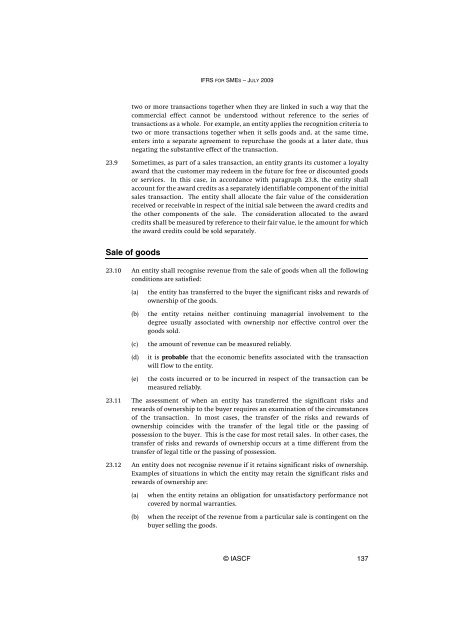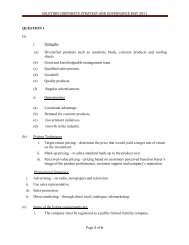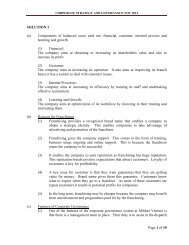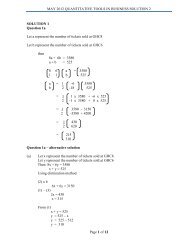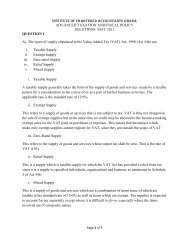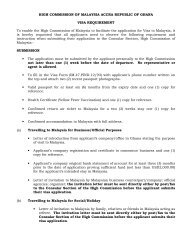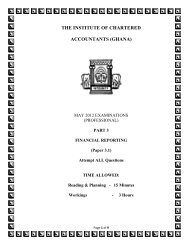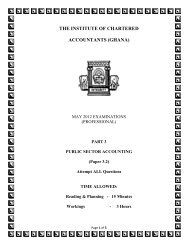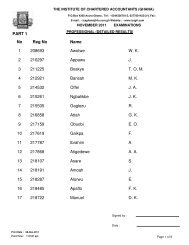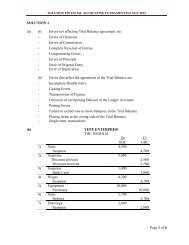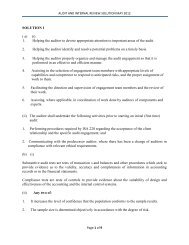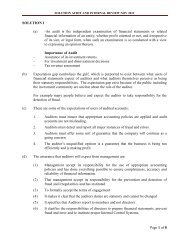(IFRS) for Small and Medium-sized Entities (SMEs)
(IFRS) for Small and Medium-sized Entities (SMEs)
(IFRS) for Small and Medium-sized Entities (SMEs)
Create successful ePaper yourself
Turn your PDF publications into a flip-book with our unique Google optimized e-Paper software.
<strong>IFRS</strong> FOR SMES – JULY 2009two or more transactions together when they are linked in such a way that thecommercial effect cannot be understood without reference to the series oftransactions as a whole. For example, an entity applies the recognition criteria totwo or more transactions together when it sells goods <strong>and</strong>, at the same time,enters into a separate agreement to repurchase the goods at a later date, thusnegating the substantive effect of the transaction.23.9 Sometimes, as part of a sales transaction, an entity grants its customer a loyaltyaward that the customer may redeem in the future <strong>for</strong> free or discounted goodsor services. In this case, in accordance with paragraph 23.8, the entity shallaccount <strong>for</strong> the award credits as a separately identifiable component of the initialsales transaction. The entity shall allocate the fair value of the considerationreceived or receivable in respect of the initial sale between the award credits <strong>and</strong>the other components of the sale. The consideration allocated to the awardcredits shall be measured by reference to their fair value, ie the amount <strong>for</strong> whichthe award credits could be sold separately.Sale of goods23.10 An entity shall recognise revenue from the sale of goods when all the followingconditions are satisfied:(a)(b)(c)(d)(e)the entity has transferred to the buyer the significant risks <strong>and</strong> rewards ofownership of the goods.the entity retains neither continuing managerial involvement to thedegree usually associated with ownership nor effective control over thegoods sold.the amount of revenue can be measured reliably.it is probable that the economic benefits associated with the transactionwill flow to the entity.the costs incurred or to be incurred in respect of the transaction can bemeasured reliably.23.11 The assessment of when an entity has transferred the significant risks <strong>and</strong>rewards of ownership to the buyer requires an examination of the circumstancesof the transaction. In most cases, the transfer of the risks <strong>and</strong> rewards ofownership coincides with the transfer of the legal title or the passing ofpossession to the buyer. This is the case <strong>for</strong> most retail sales. In other cases, thetransfer of risks <strong>and</strong> rewards of ownership occurs at a time different from thetransfer of legal title or the passing of possession.23.12 An entity does not recognise revenue if it retains significant risks of ownership.Examples of situations in which the entity may retain the significant risks <strong>and</strong>rewards of ownership are:(a)(b)when the entity retains an obligation <strong>for</strong> unsatisfactory per<strong>for</strong>mance notcovered by normal warranties.when the receipt of the revenue from a particular sale is contingent on thebuyer selling the goods.© IASCF 137


